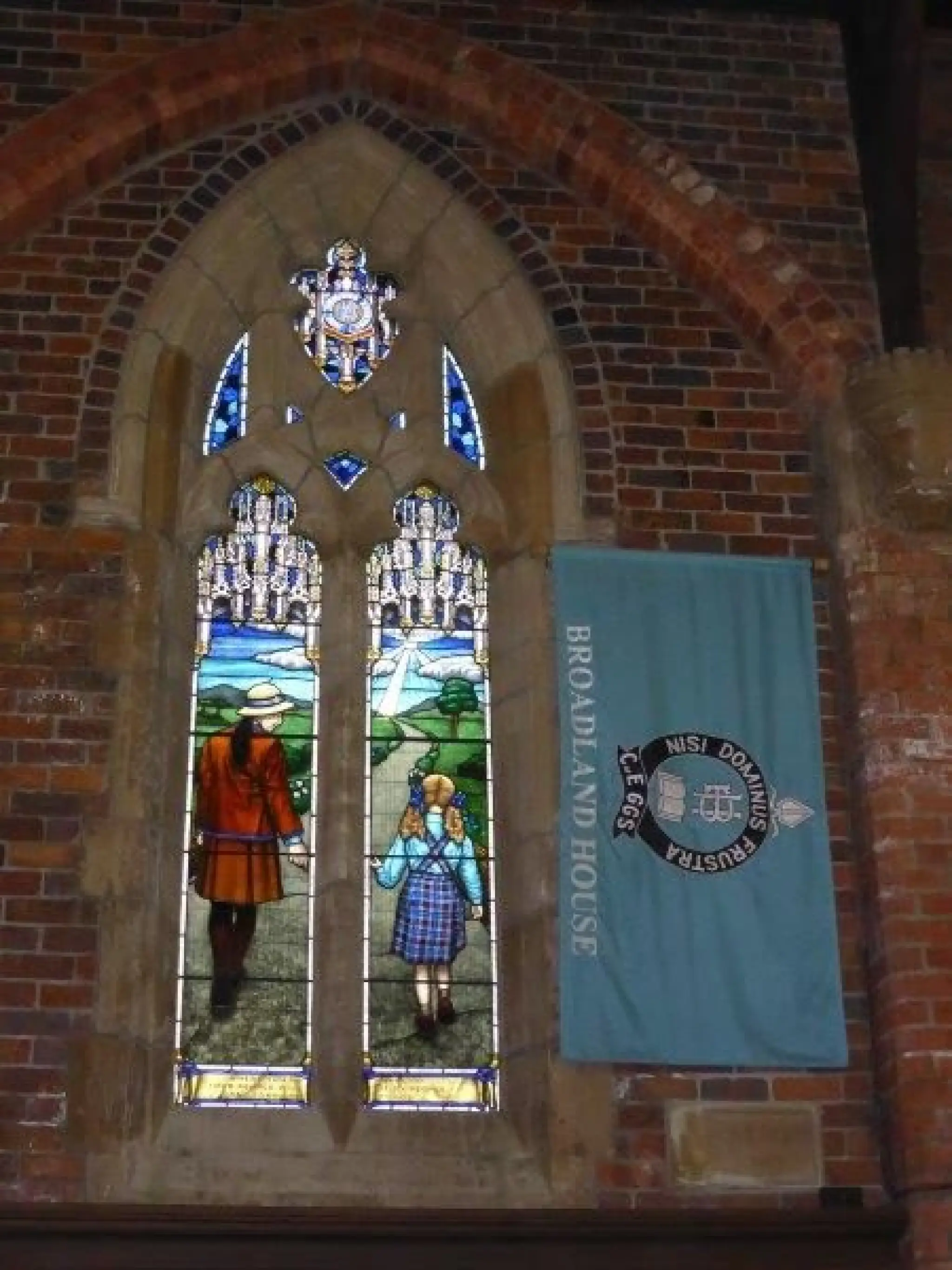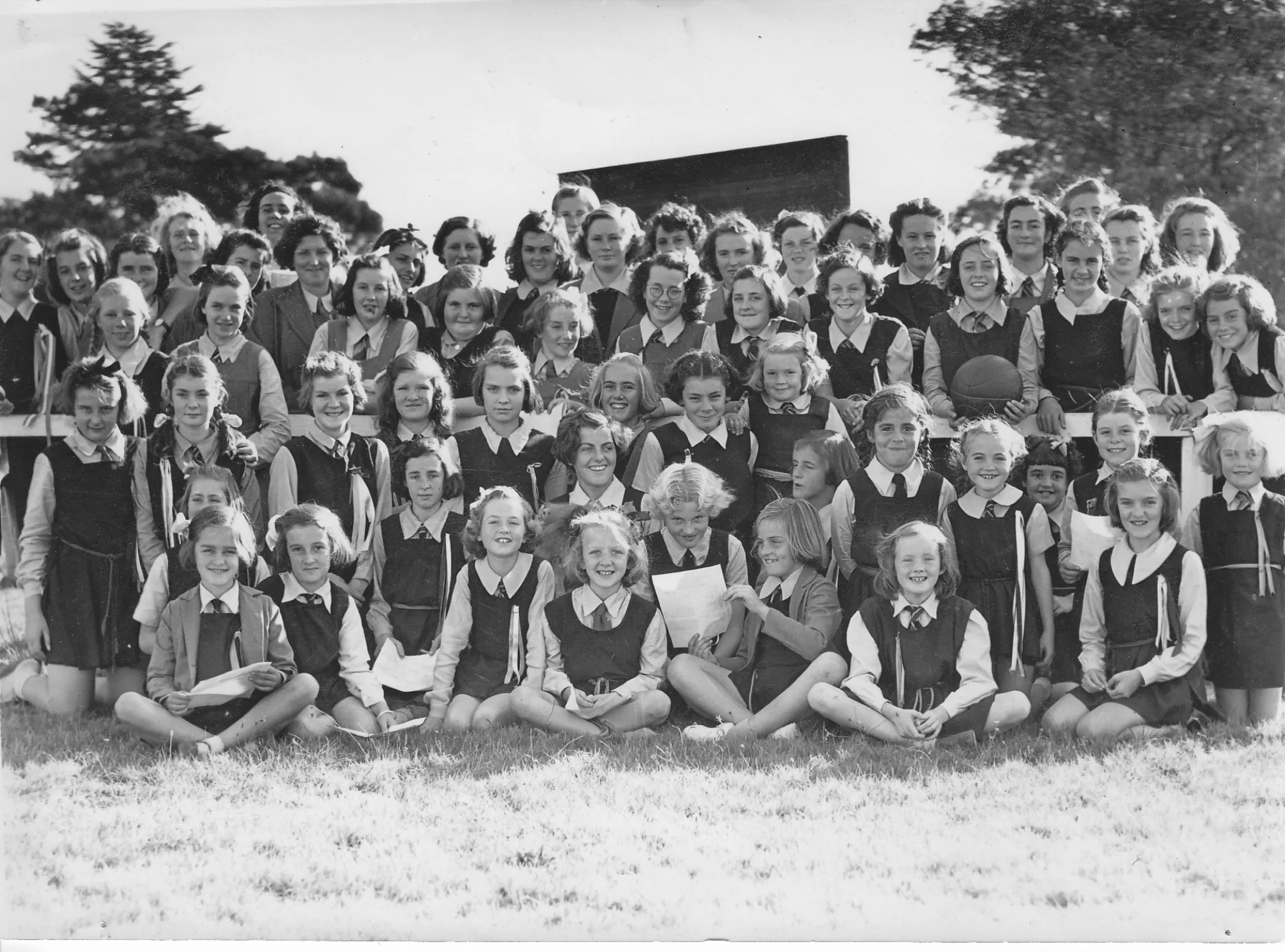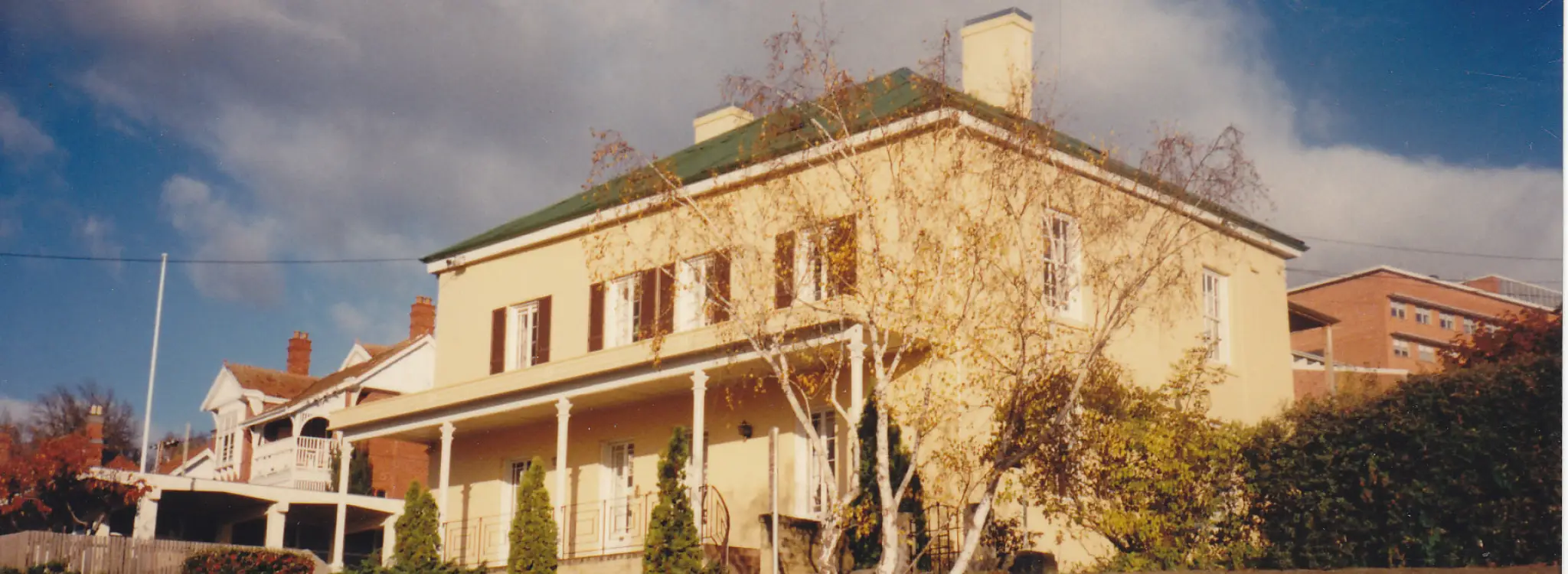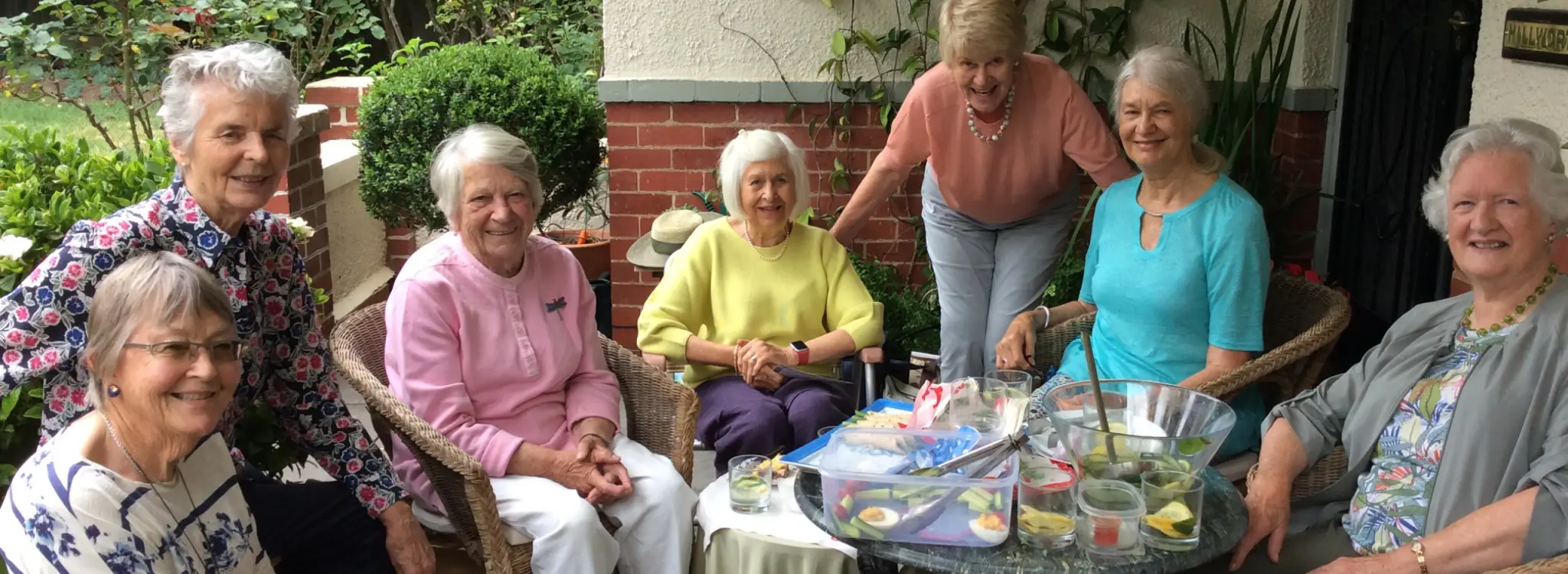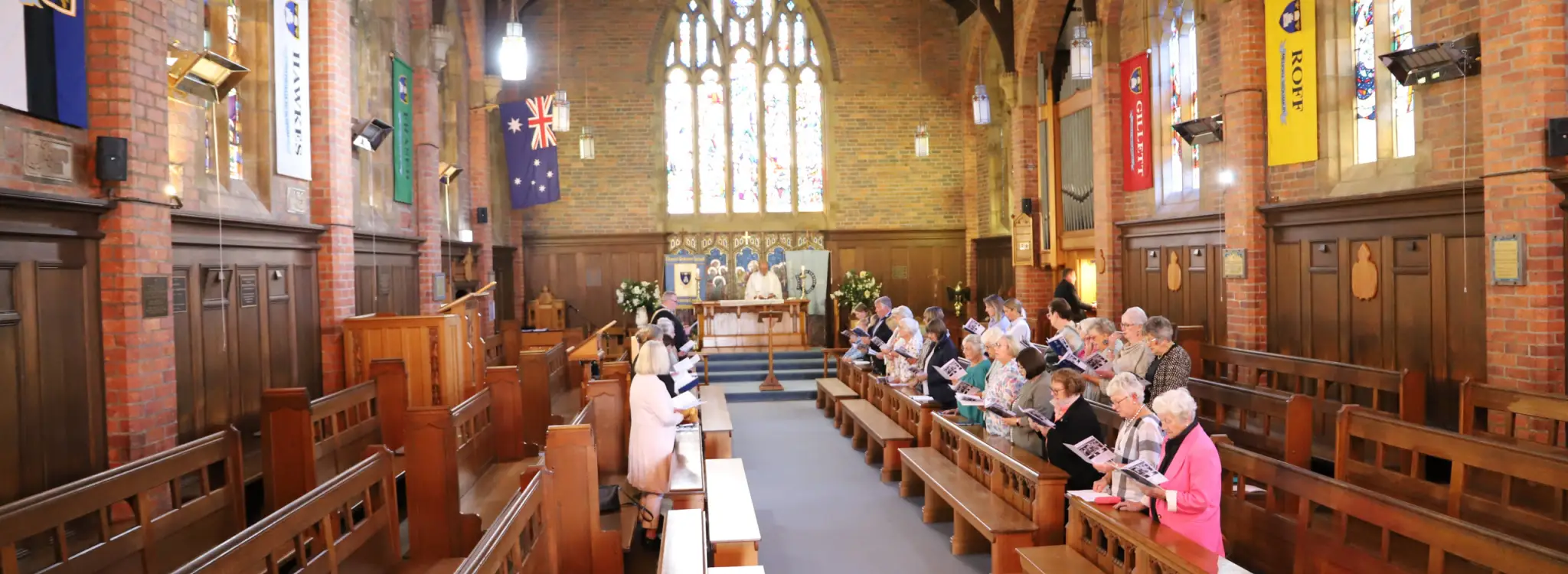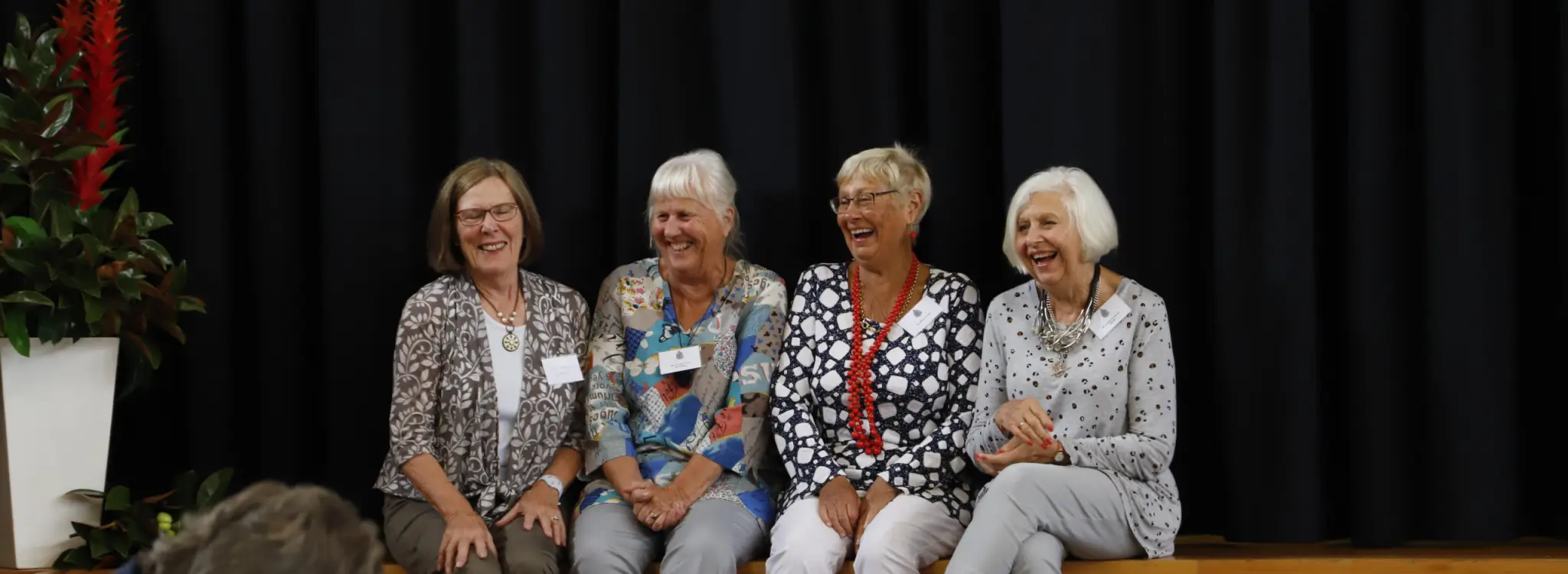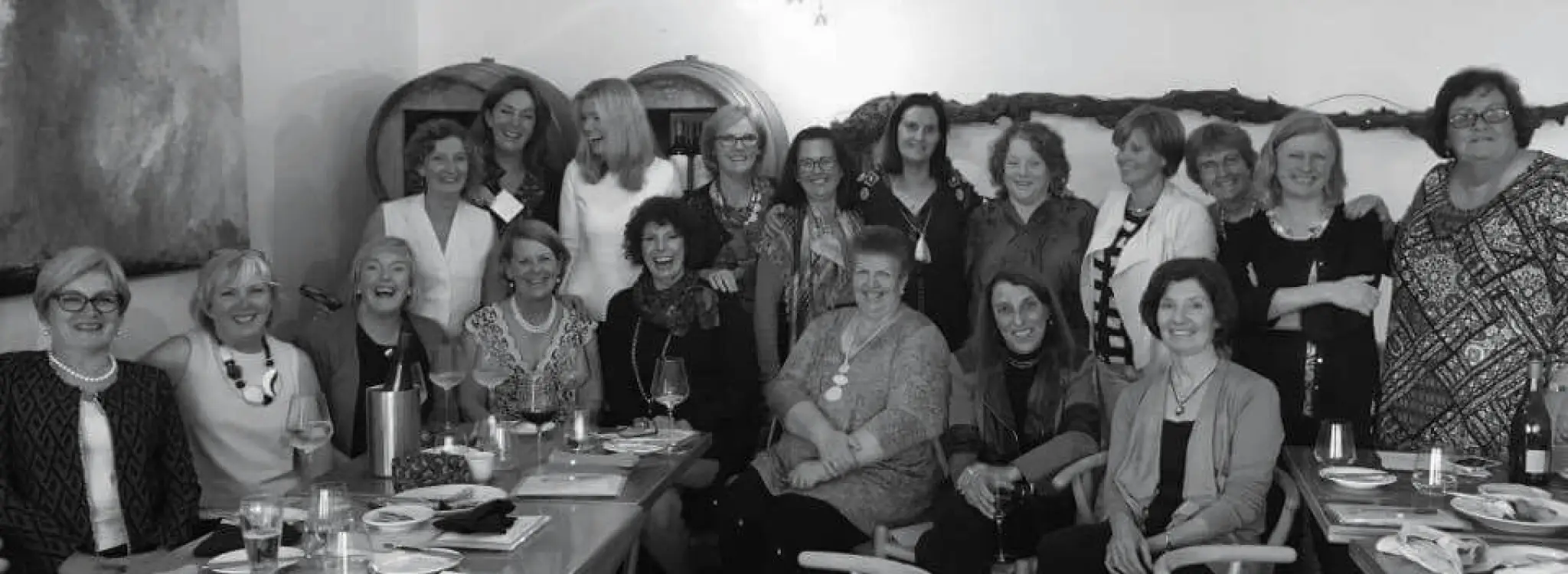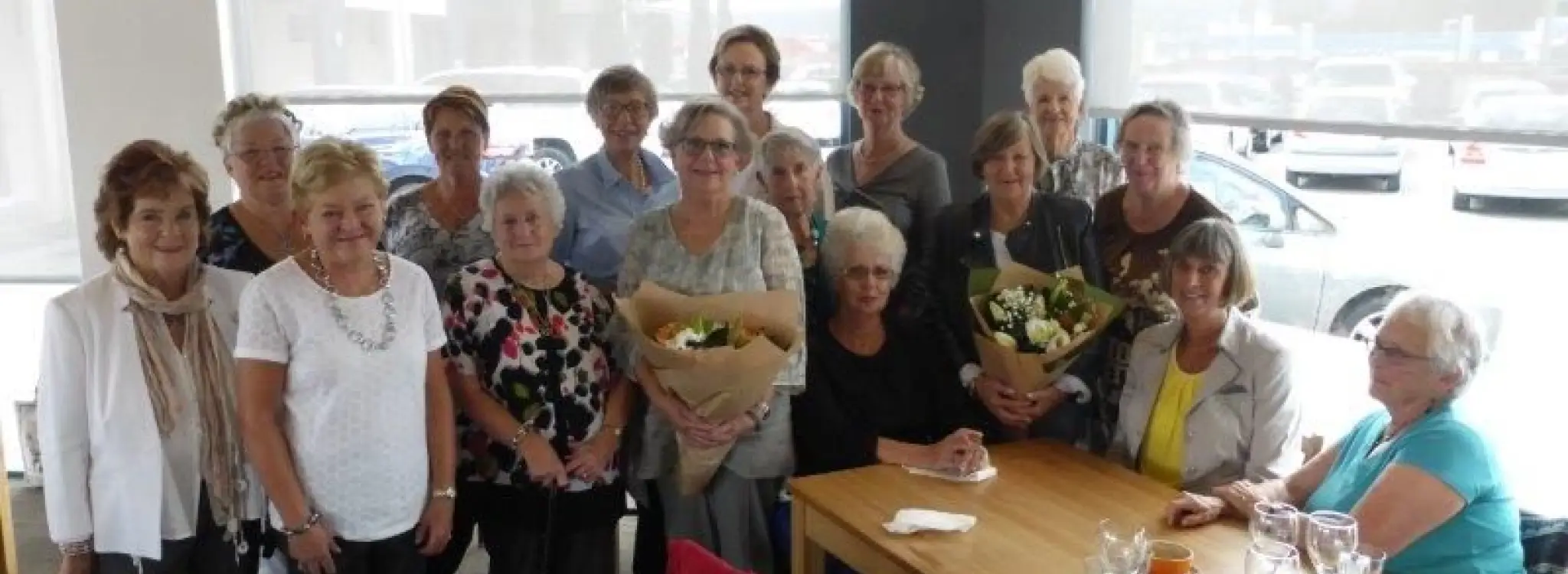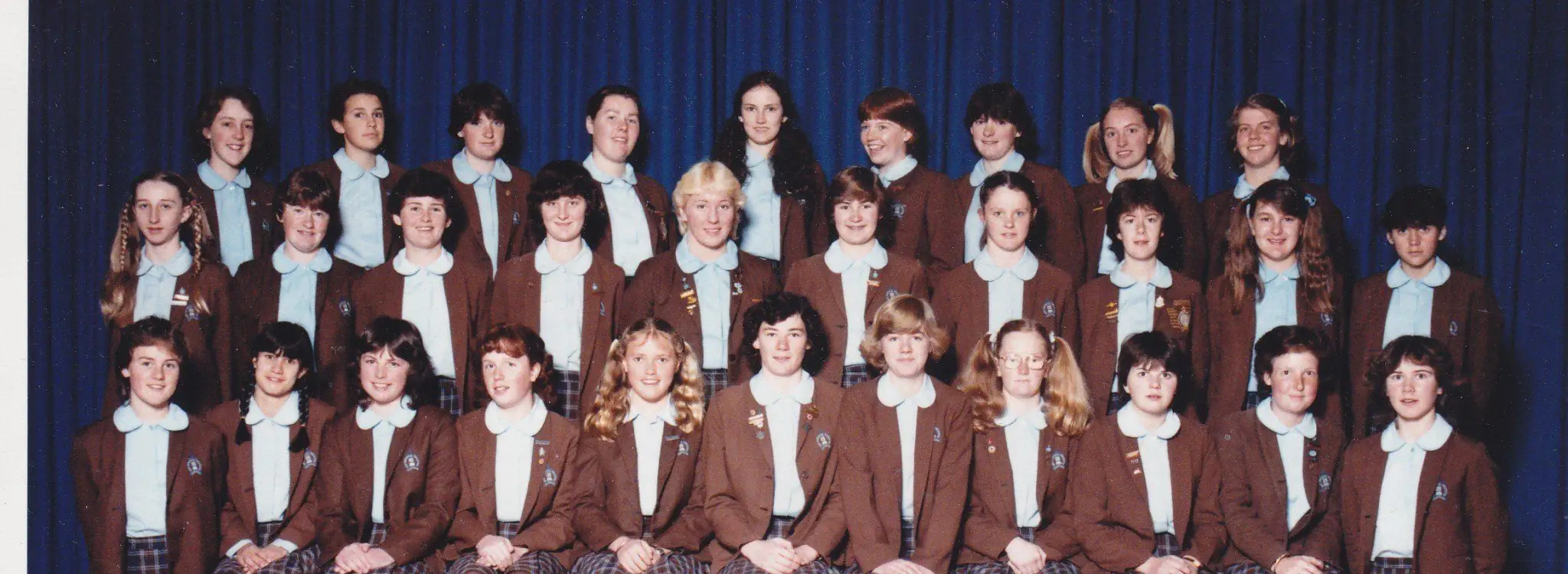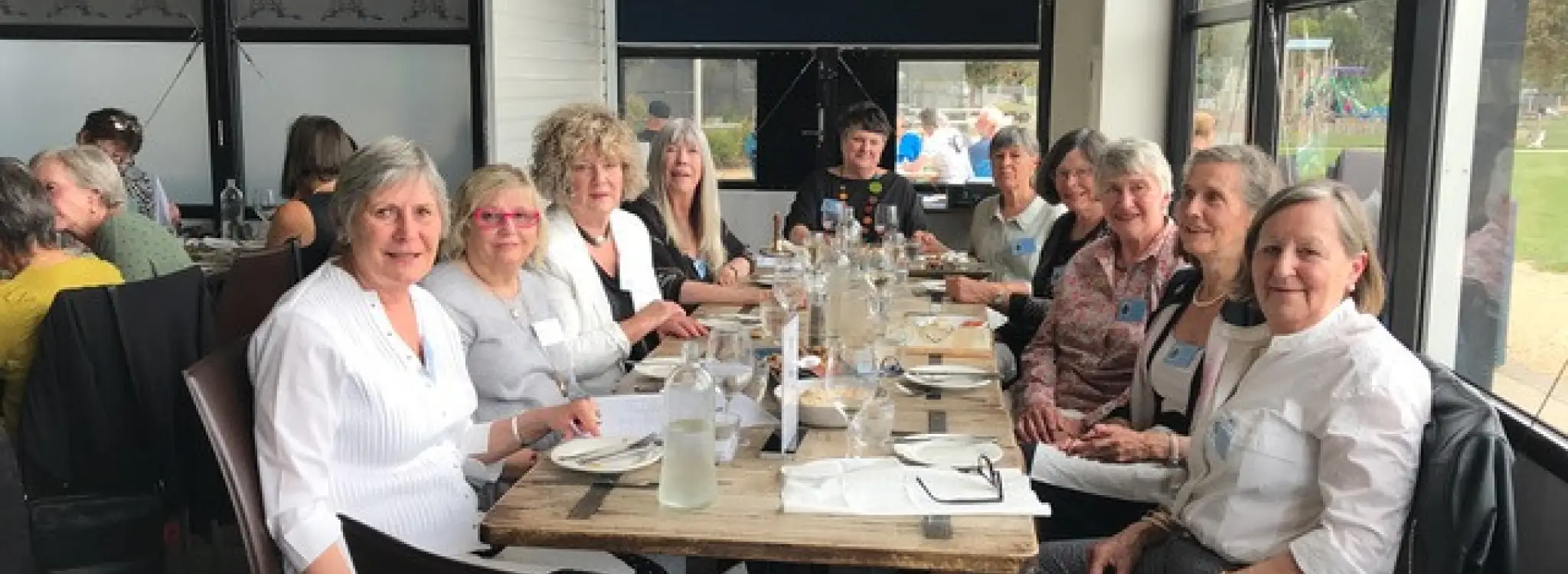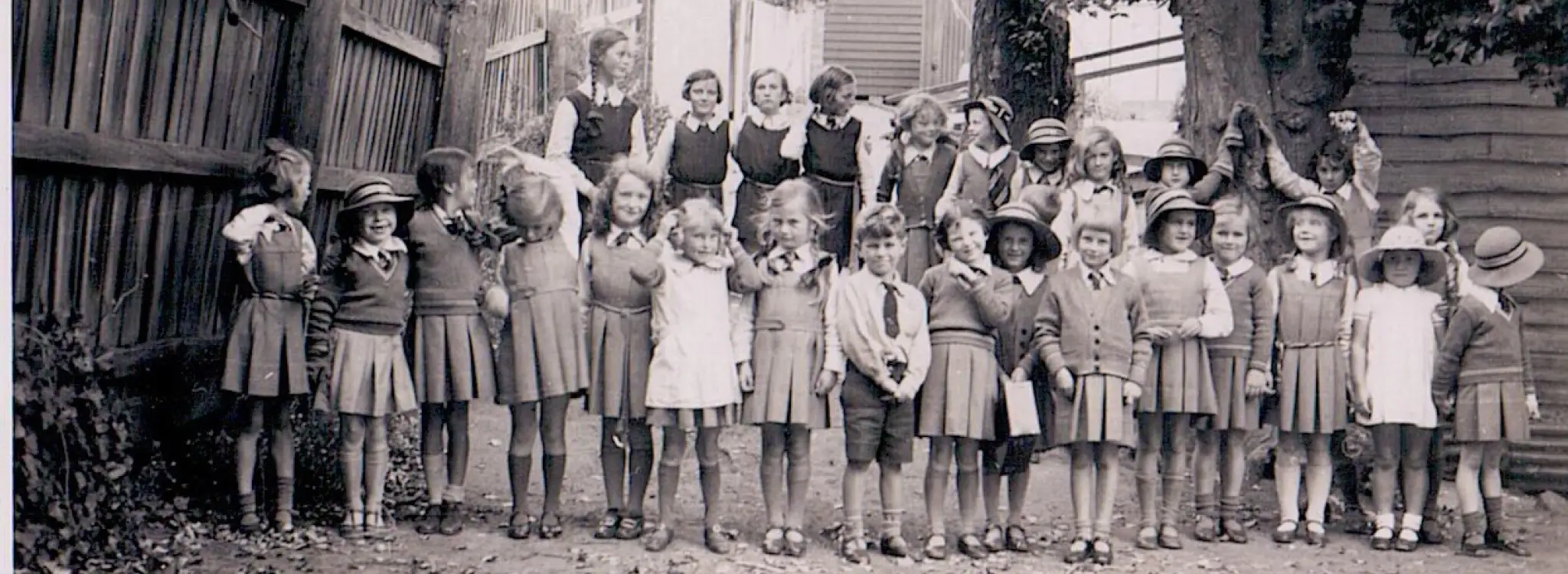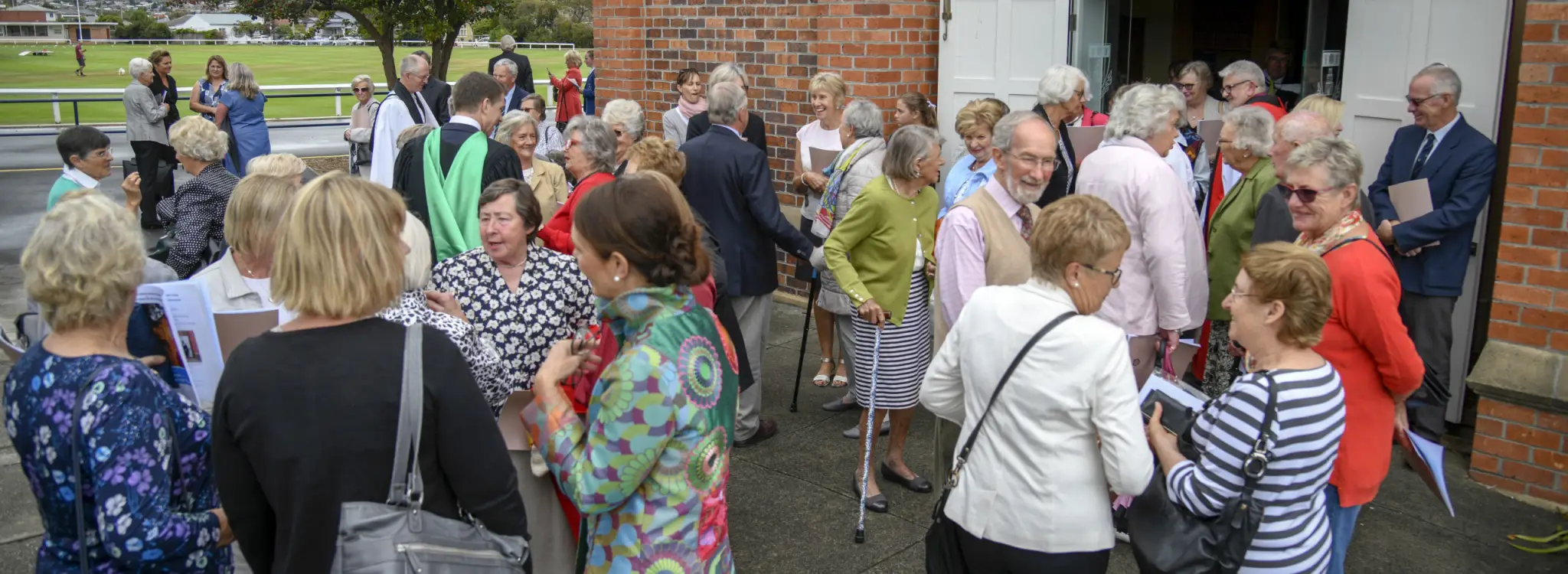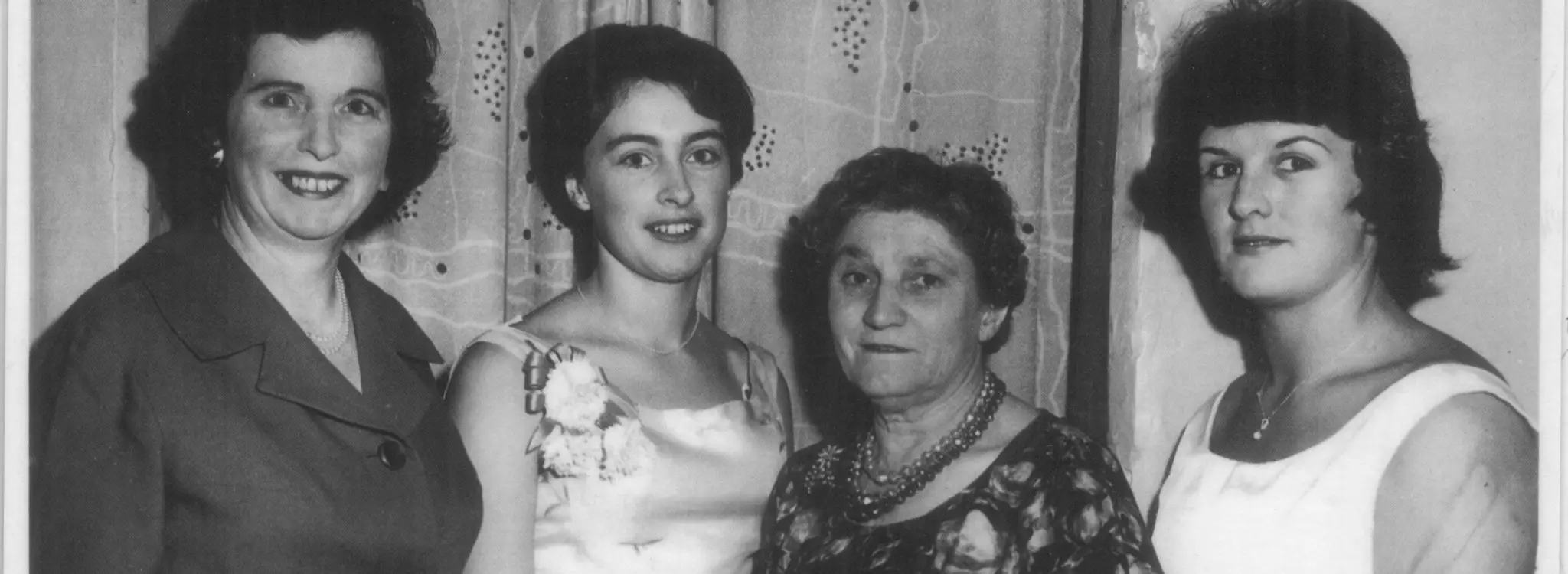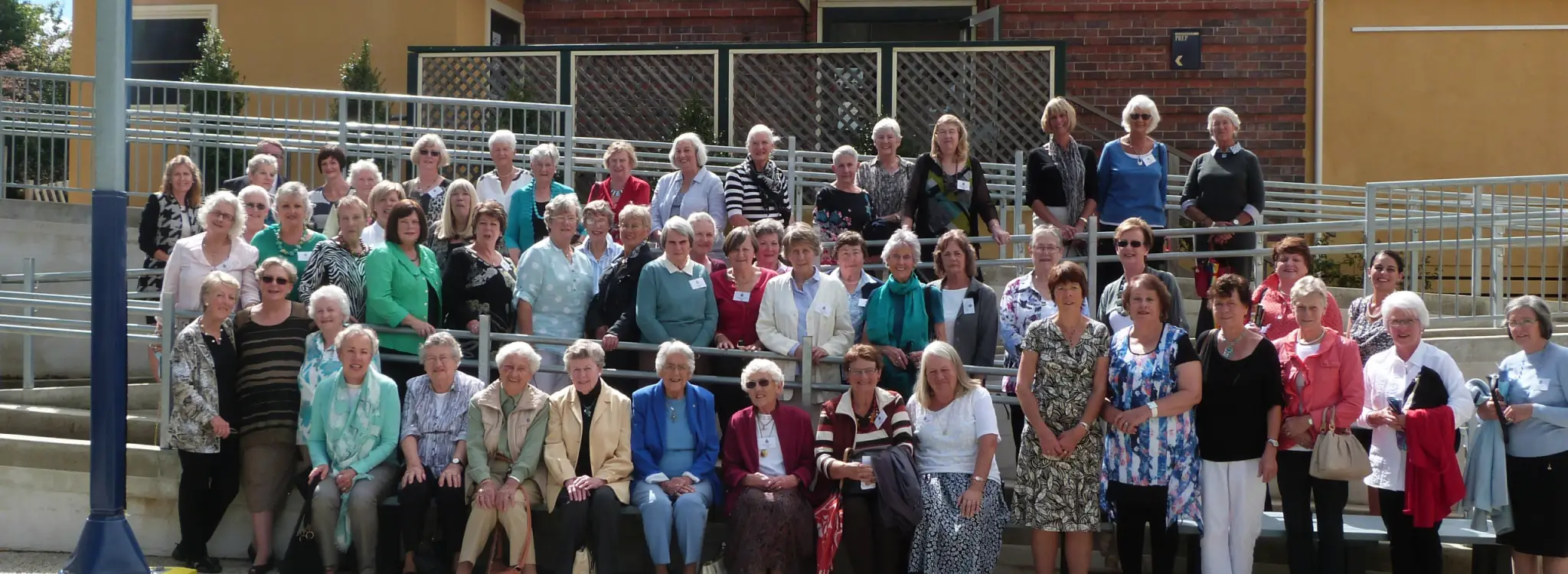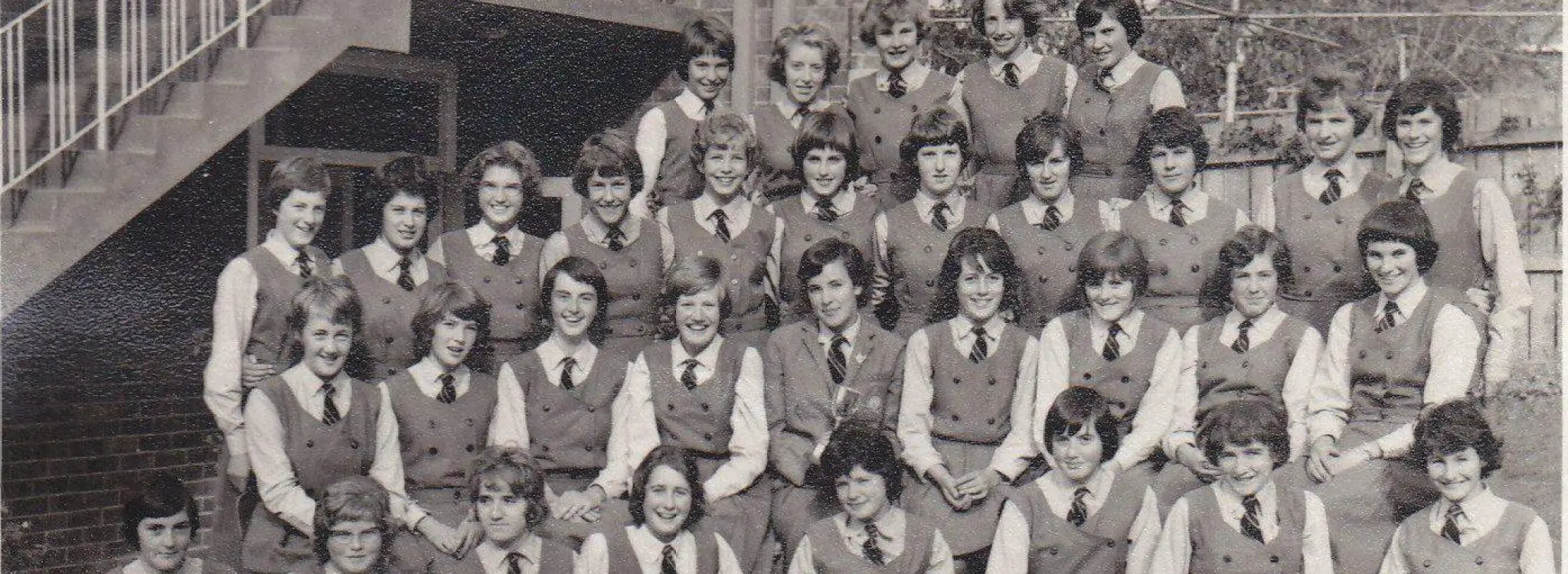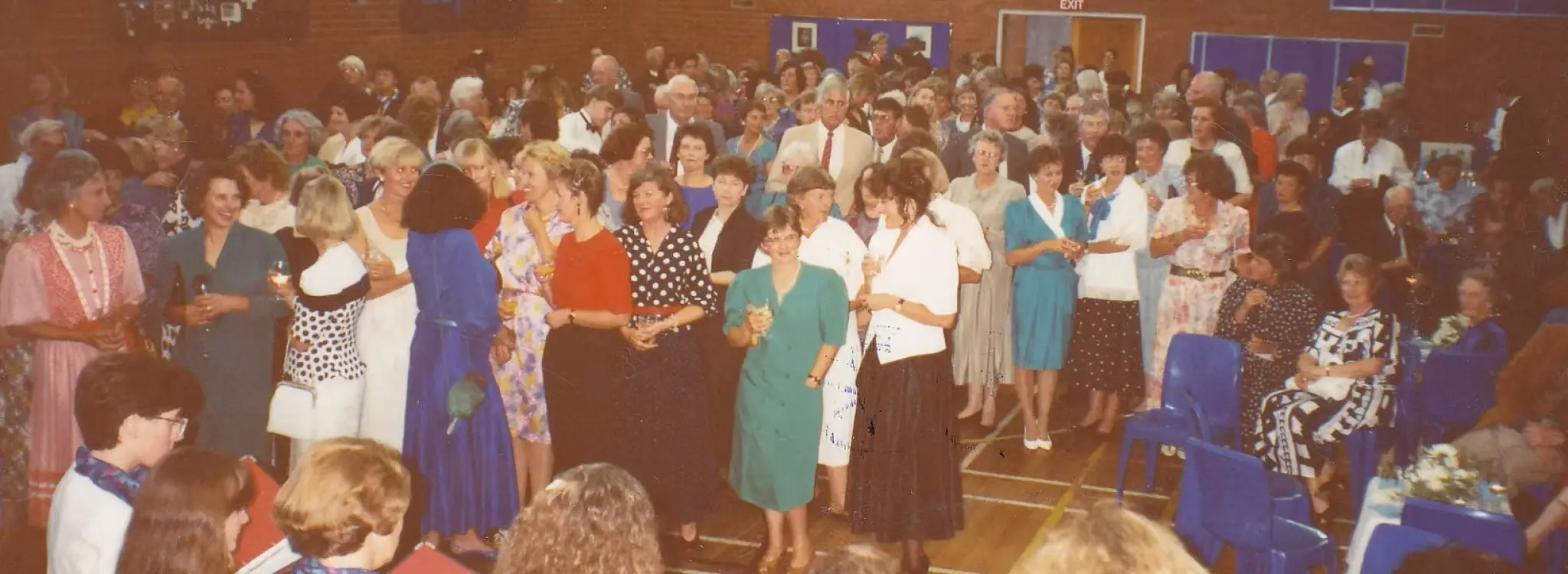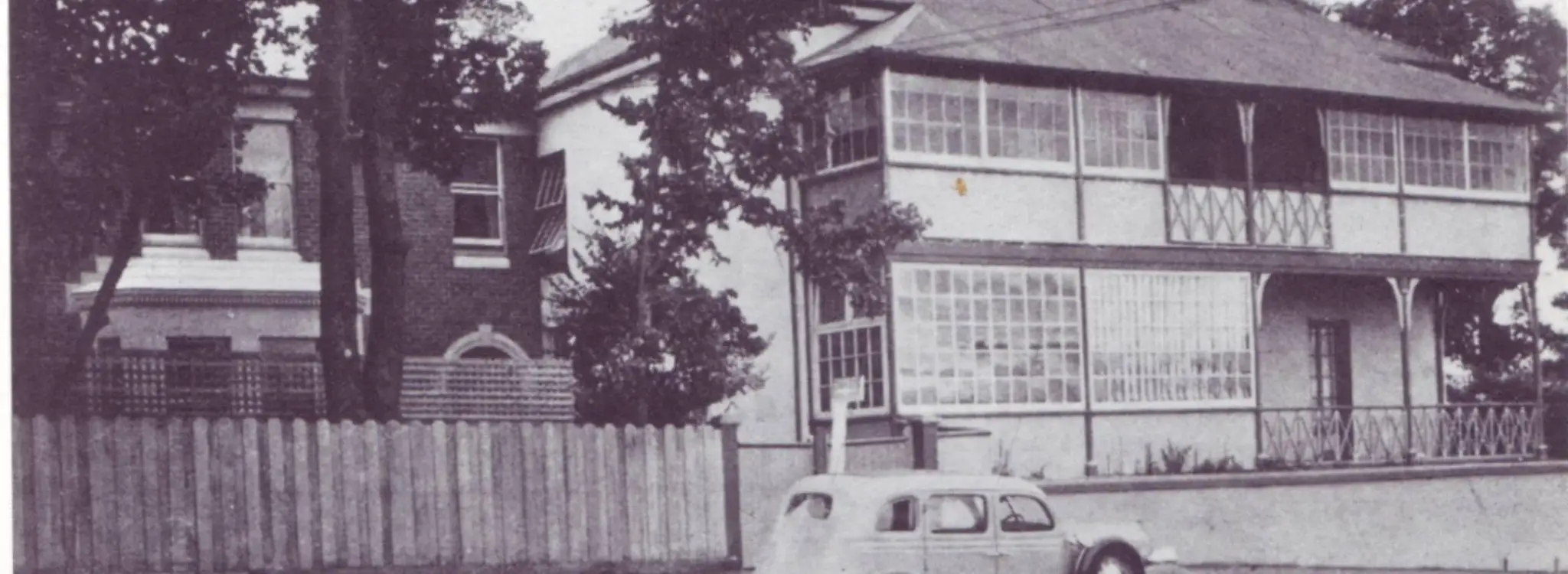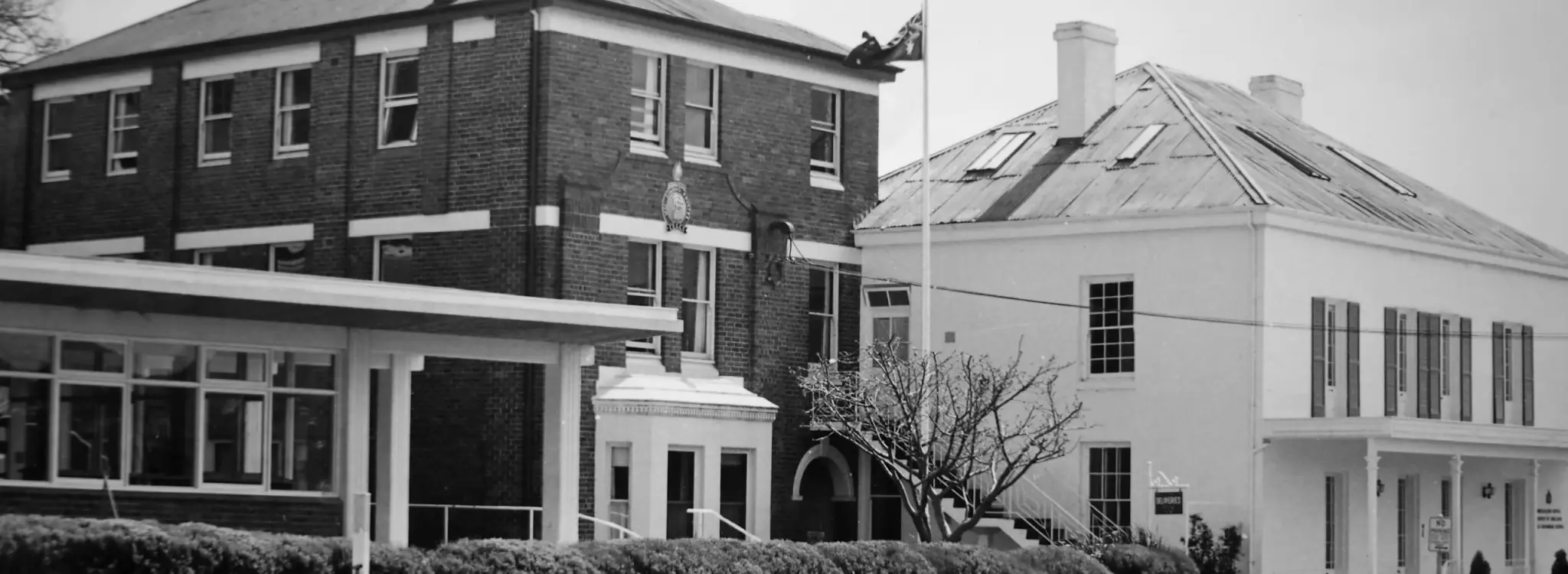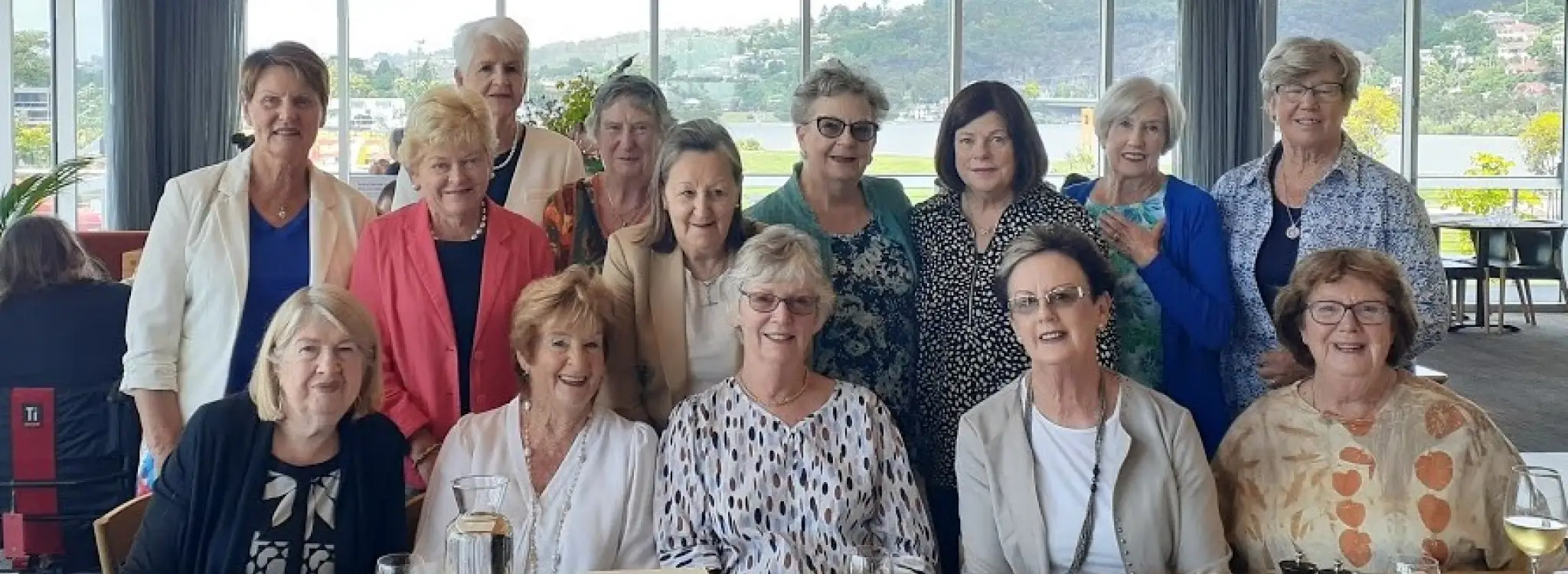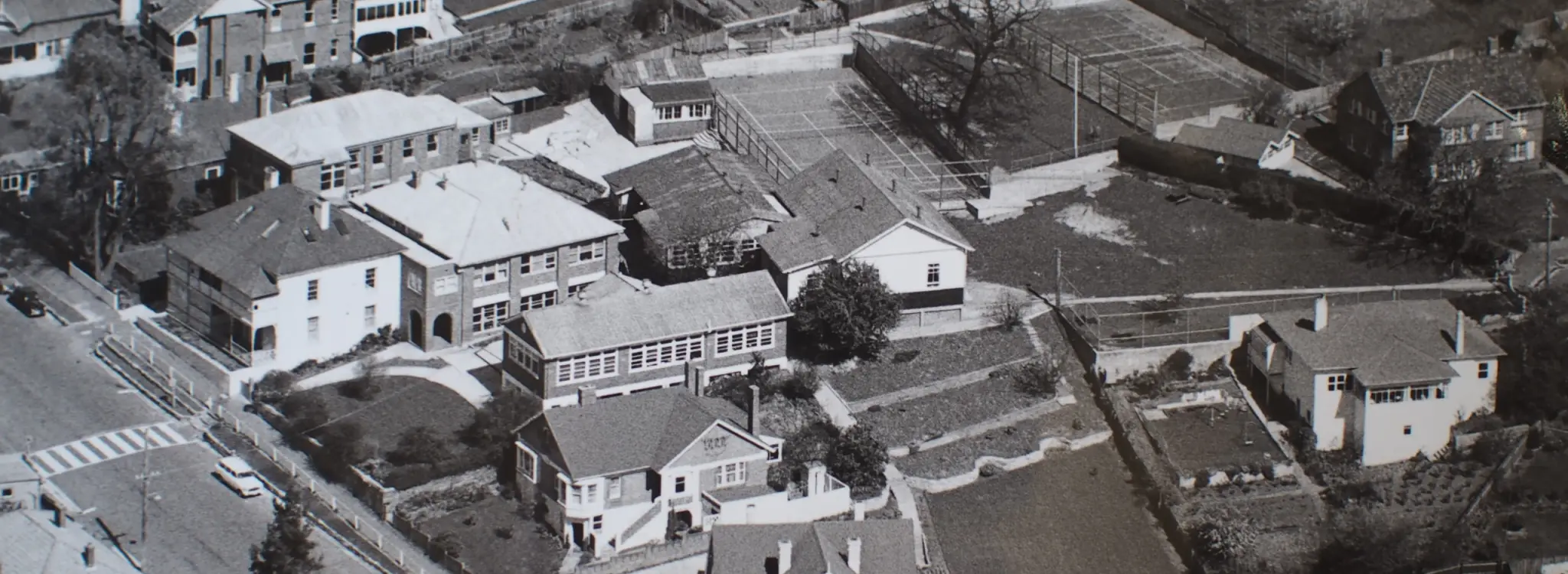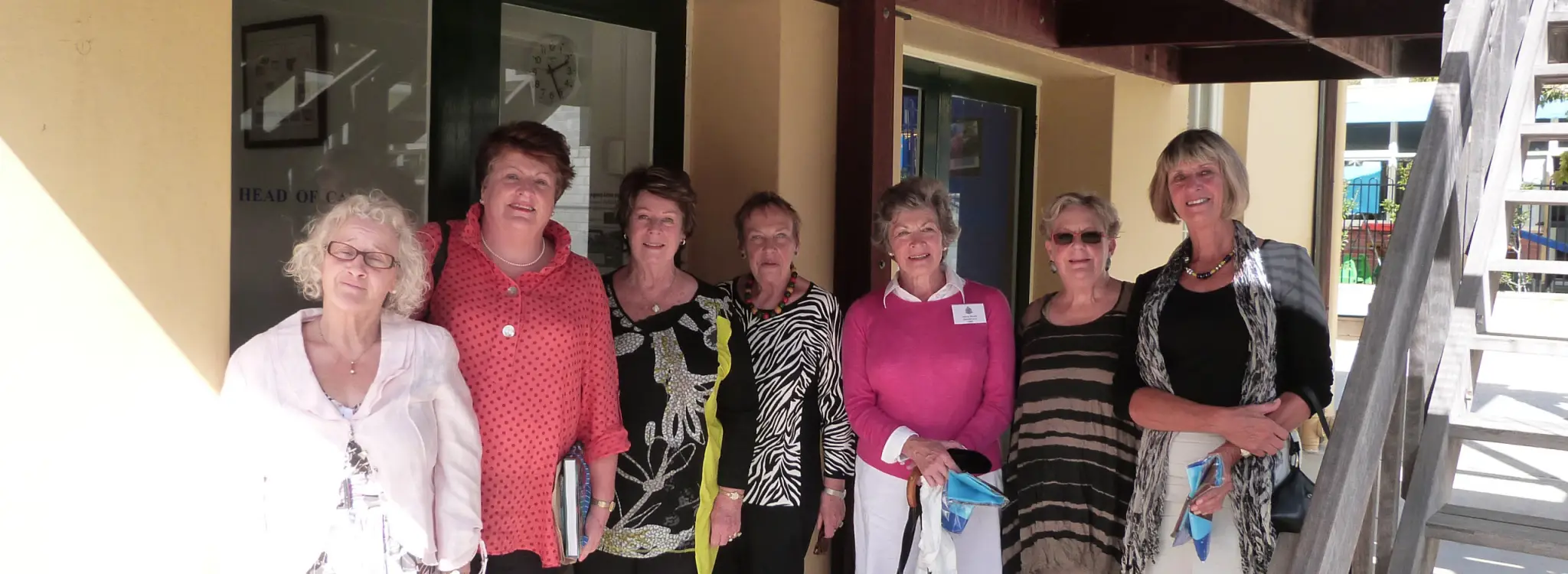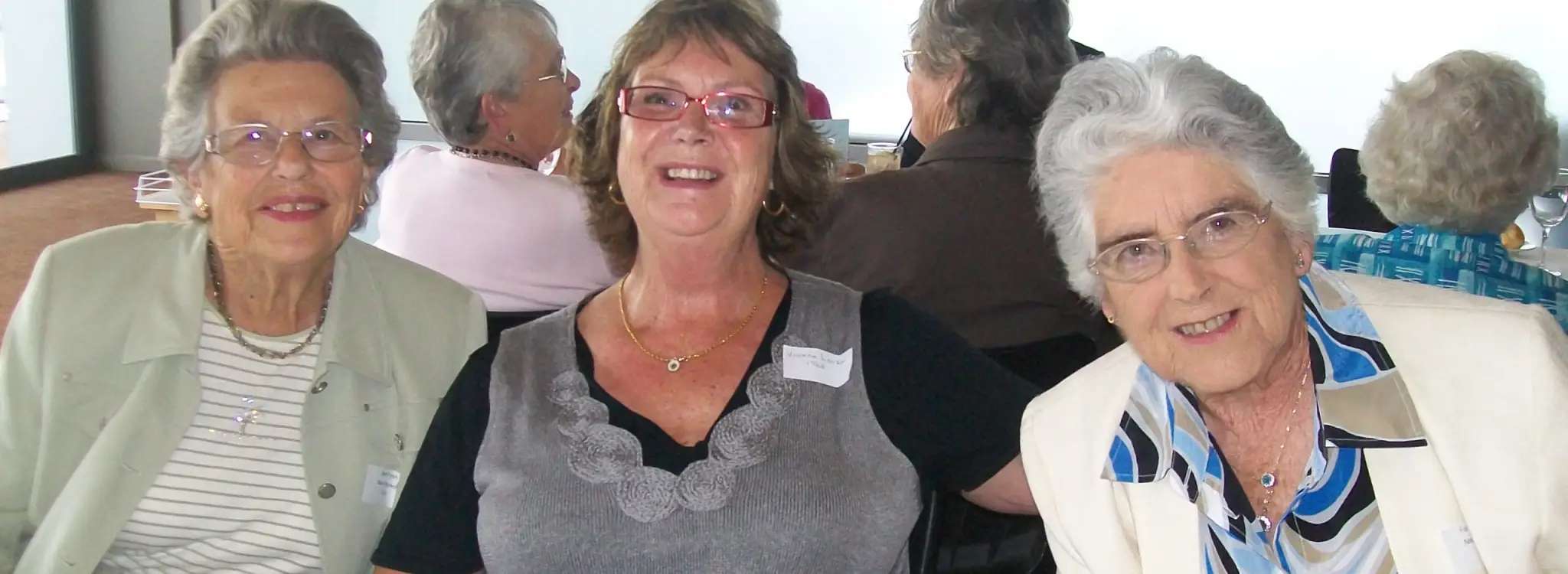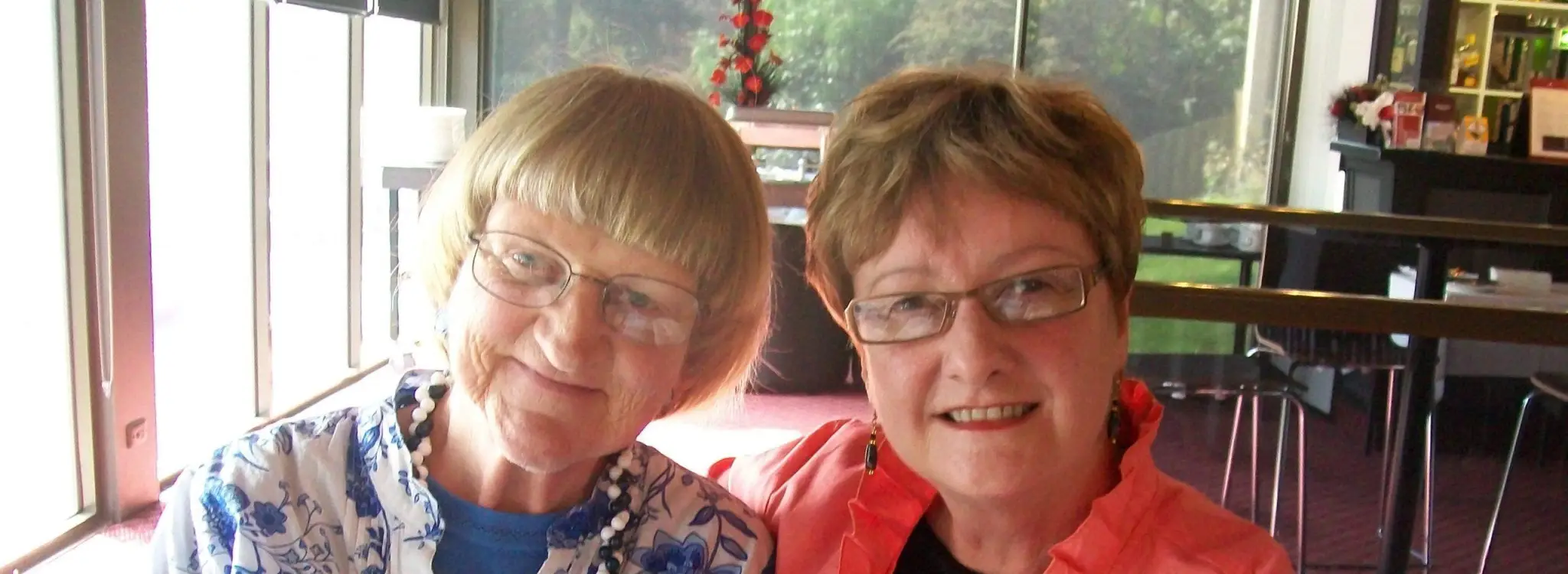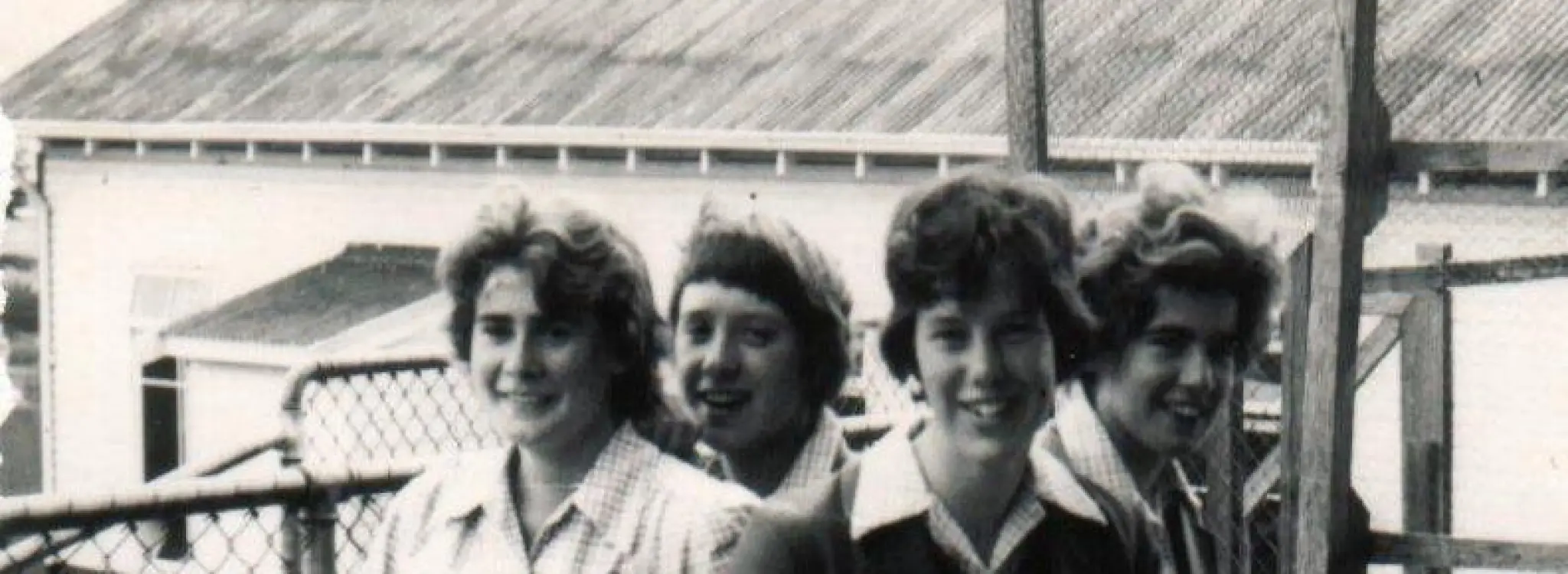| Dates | Head of School |
|---|---|
| 1845/46 - 1884 | Mrs Manley (later Buesnell) |
| 1885-1908 | Miss Jane Christina Hogg |
| 1908-1925 | Miss Mary Hogg (Co-Principal) Miss Henrietta Middleton (Co-Principal) |
| 1926-1928 | The Rev Dr Herbert Thomas Postle |
| 1928-1931 | Miss Merle Weaver |
| 1932-1963 | Miss Marjorie Lorna Rooney MBE |
| 1964-1966 | Miss Alberta Holt |
| 1967-1977 | Miss Mary Hill OAM |
| 1978-1979 | Mrs Margaret Freeman |
| 1980-1982 | Miss Lillian Powell |
| 1982 | Mr Christopher Stephen Strong AM |
On 24 April 1982, it was announced by the Boards of Management that Broadland House and Launceston Church Grammar School would amalgamate. Mr C S Strong became Headmaster of both schools.
The contents of the Broadland Archives were moved to a new archival home at the Launceston Grammar Senior Campus in December 2023 to make space for additional classrooms on the Grammar Junior Campus.
Every item in our collection such as School registers, photographs, furniture, and scrap books, has been catalogued and is safely stored to preserve the history of 'The Best School of All'.
Remnants of the past, the much-loved Kindergarten Birthday chair, trophy cabinet, wooden trunk, abacus, and cane chair, remain in the Kindergarten and Prep classrooms on the Junior Campus.
Broadland Honour boards grace the walls of the Faulkner Building and brass plaques can be found in the pisė building. The longest serving Headmistress (1932-1963), Miss Rooney’s portrait remains, and a tree was planted in the grounds of the Junior Campus in 2025. A well deserved and lasting legacy.
May these doors
Ever be open
For the admission of
The True
The Beautiful
And the good
The following information provides a small history of the Broadland Old Girls Association, the Broadland scholarship origins and the passion that Old Girls have found in raising funds for worthy causes, encouraged always by the words of our School song:
Do your best and always play the game
Show them how old Broadland won her fame
Tell them that she always will remain
The very best school, the best of allKeep on helping all your leaders on
Keep on helping whether weak or strong
Thus shall victory come to tune your song
For the best school, the best of all.Keep on smiling while you play the game,
Keep on helping all to do the same.
Keep our motto ever without stain
For the best school, the best of all.
Is the Broadland Old Girls Association the longest serving Old Girls Association? Whether the date was 1893 or 1915 it shows that old girls were, and remain, extremely passionate about their old school as shown from the earliest digitised newspaper reports.
Sourced information:
- Broadland House Old Girls’ Newsletters
- Broadland House Scholarships
- Broadland Papers: 1st and 2nd editions
- Broadland Prospectus, 1925
- Establishment for Young Ladies, Chapter 10 - Broadland House OGA
- TROVE variants searched 1883 – 1956 Broadland Ladies Committee
- ……… signifies omissions from TROVE reports
Additional explanations on reports in the DAILY TELEGRAPH, EXAMINER and MERCURY - Dates vary as to when The Broadland OGA was established.
- Broadland Old Girls Association may be the longest serving, beating Methodist Ladies College by 1 year.
- A hiccough occurred in 1915 when the association was dissolved and then reformed.
- In 1936 the association transferred funds to the ’Ladies Committee’ who took over the Broadland Old Girls Association Scholarship.
Trove Digitised Newspaper Reports
11.10.1883-Launceston Examiner
Broadland House Upper Elizabeth-street. Mrs. BUESNEL begs to intimate to her friends that she has no idea of either giving up her school or leaving the colony, as has been reported.
23.08.1890-Daily Telegraph
From Miss Hogg, Broadland House, enclosing cheque for £2 10s, the gift of the girls attending her school, to be devoted to the children's ward, and they suggested that the money should be devoted to brightening the ward with some pretty things. A special vote of thanks was passed to Hiss Hogg for her contribution.
27.12.1890-The Colonist - BROADLAND HOUSE SCHOOL
The distribution of prizes at the above school took place in the school-room on 19th inst. ………REPORT. Before proceeding with the report of the schoolwork you will permit me to refer very shortly to the death of Mrs Buesnel, the former principal of the school. At the beginning of the year we were all shocked to hear of the terrible accident which had happened to her, and after a long illness she died in Sydney a few months ago. Mrs Buesnel had been connected with education in Tasmania for many years, and it is not necessary for me to speak of the work she did amongst you. Although she severed her connection with the school when I took it, she continued to take great interest in it, and whenever its pupils gained any public success the first to write and congratulate me was the lady who had so faithfully served her day and generation, and who will not soon be forgotten by her old pupils. It may not be out of place to say a few words about the school since I took charge of it some six years ago. As you all know the school had fallen off owing to the failing health of its principal, and I found myself with the uphill work before me of having to build it up again - the undertaking seemed a very heavy one, but one thing I resolved upon, and that was that the school should make its way on its own merits. Its pupils have been very successful in all the public examinations, but the ideal I have aimed at is that the teaching every girl receives will train her intelligence and reason, widen her sympathies, and open her heart and mind to those educational advantages which do not consist in books or in work. It is a matter for regret that girls leave school so early. Many come here for a year or eighteen months, and just at the time when the drudgery of earlier work is beginning to reap its natural and deserved reward, they leave school. If parents only knew the mistake of taking girls away from school so early they would not thus sacrifice the future for the present. Now that we have a university in Tasmania, I hope more encouragement will be given to the higher education of girls by having the scholarships in the Senior Examination open to girls as well as boys. In June, four of our girls (Misses Murray, Robertson, Bonnily, and Bushman) passed the Melbourne Matriculation Examination and took honors in English and French. The pupils who entered for the Trinity College Examinations in Music were also successful. The general school work has been carried on as usual. The girls have begun class singing again, but now it forms part of the usual school course. ln addition to the usual drill instruction given by Sergeant Major Welsh, there has been a short drill lesson every morning during the cool weather. Some prizes were offered at the beginning of the year for the best essays on Tasmania, its geography, flora and fauna, and productions. The Rev. H. D. Atkinson, B.A., very kindly gave the girls a series of interesting lectures on the subjects, and the essays sent in were very satisfactory. Another prize was offered for the best collection of Tasmanian ferns, these to be collected by the girls in their spare time. In order that the girls may begin the work during the approaching holidays, a lady wishes me to state now that she will give a prize next year for the best collection of wildflowers. I know of no more interesting work than collecting. Some delightful papers on the 'Flora of Tasmania' have been appearing in the Examiner, and which ought to be published in book form. They will give you a great deal of help with your collections. In a school like this there is necessarily a great deal of work, and my best thanks are due to the teachers, visiting and resident, who so cheerfully and willingly help me, and who devote themselves so thoroughly to their pupils. To Miss Roote for her care and attention to the boarders in the house, I am most grateful. The friends of the school have been very generous with prizes this year, and my best thanks are due to Mrs Evans. Mrs Flexman, Mr Birchall, and a friend in England, for the valuable prizes they have sent us.
14.08.1893-Launceston Examiner - FANCY FAIR AT BROADLAND HOUSE (First mention of old girls.)
With a commendable spirit the pupils attending the Broadland House School recently decided to give up their pocket money in order to assist the funds of the newly formed Association for Nursing the sick, poor, and also of the Benevolent Society, the funds of the latter society having been drawn on heavily for some time owing to the depression which exists amongst the working classes. The objects of both associations being of a truly charitable character, the principal of the school, Miss Hogg, willingly fell in with the idea to make the effort a financial success was decided that a fancy fair should be held in the school rooms on Saturday, as the result of which the pupils expected to be able to place about £10 in the hands of the principal for division between the institutions named. The parents of the children being appealed to consented to send in cakes and confectionery, and many of the "old girls” of this well-known educational establishment on hearing of the movement requested to a be allowed to assist. This request was granted, so that both present and past scholars vied with each other in order to a make a good display. ………The principal, with a number of "old girls," busied themselves in making welcome, while the present pupils actively engaged in the disposal of the numerous choice and pretty articles.
07.09.1904-Daily Telegraph - BROADLAND HOUSE FAIR
……… It has been suggested, though, that the old girls form an association to continue the good work, and, later on, perhaps, more will be heard of the idea. As on former occasions, the charities assisted will be the Benevolent Society, the District and Evangelical Nursing Associations, the Society for the Blind, and the M.L.C. Convalescent Home at Evandale.
Miss Hogg’s bedspread
………. On the fancy stall at the fair will be displayed the autograph bedspread presented to Miss Hogg by her past and present pupils, as a memento of the 20th anniversary of her school. The foundation is of white linen, with inlets of hand-made Cluny lace.
30.06.1906-Examiner - BROADLAND HOUSE SCHOOL
A meeting of the past pupils of the above school will be held in the schoolroom on Wednesday afternoon, at 1.30 to consider the formation of an Old Girls Association.
10.12.1906-Examiner - BROADLAND HOUSE FAIR IN AID OF LOCAL CHARITIES
The fair in aid of local charities which was opened at the Albert Hall on Saturday afternoon by the Mayoress (Mrs. C. Russen) was organised by the Old Girls’ Association of Broadland House School and was a very great success. For some years past Miss Hogg, principal of Broadland House School, has taken the responsibility of a charity fair with the assistance of her pupils, every second year, and has thereby given considerable assistance to several charitable institutions in the city. And to prove the force of good example, the association recently formed among old girls of the school decided to follow on the same line of good work as their principal. Hence the splendid effort of Saturday. The association members were generously assisted by Miss Hogg and the present pupils.
19.12.1906-Examiner - SCHOOL SPEECH DAYS
Miss Hogg – “I think the chief event of the year in connection with the school has been the formation of the Old Girls Association. Nothing has given me so much pleasure.”
21.09.1908-Examiner - BROADLAND HOUSE FAIR (By "Sylvia")
At the Albert Hall on Saturday afternoon the fair organised in the interests of local charities by the Old Girls Association of Broadland House School was opened by the Mayoress Mrs Boland
The Mayoress said:
………“The object of the Broadland House Old Girls Association in holding this fair is to raise funds to assist the District Nursing Association, the Evangelical Nursing Association, the Benevolent Society, the Society for the Blind, and the Ministering Children's League Convalescent Home, to carry on their charitable and benevolent work.
12.09.1910-Daily Telegraph - BROADLAND HOUSE FAIR
………To give some idea of the work done by the Broadland House Old Girls' Association for the help of charities since its inauguration seventeen years ago, she (Lady Baron) quoted figures that had been given her to the effect that from these biennial fairs the sum of over nine hundred pounds had been made and distributed among the needy.
05.08.1915-Daily Telegraph - SOCIAL ITEMS (page 7 col 3)
At the annual meeting of the Broadland House Old Girls Association held last Wednesday, July 28, at Mr Gladman's tea rooms, Brisbane-street, it was resolved to dissolve the association.
05.08.1915-Daily Telegraph - SOCIAL ITEMS (page 7 col 3)
A meeting was held yesterday afternoon at Broadland House School, Lyttleton street, when the Broadland House Old Girls’ Association was reformed, the following officers being elected. The Misses Middleton and M. Hogg, joint presidents; Miss Winnie Cragg and Miss Geraldine Fairthorne, joint hon. secretaries; and Miss Maggie Bennell, treasurer, with a strong and representative committee it was resolved that the members meet every week at the school for some, definite working object, Red Cross work being decided upon for the present.
16.12.1916-Examiner - BROADLAND HOUSE SCHOOL SPEECH DAY
………The Old Girls’ Association has been very active this year. Several parcels have been forwarded to the committee of the Trench Comforts Fund, and a subscription has been sent to the City Missionary to help in the good work done by him (sic)
05.03.1924-Daily Telegraph - BROADLAND HOUSE FAIR
………The object of the fair is to help raise sufficient funds for renovating the tennis court, and the present day girls are ably assisting the Old Girls’ Association for this end.
25.03.1925-Daily Telegraph - BROADLAND HOUSE FAIR
A fair is being held at Broadland House School on Saturday week (April. 4) by the Old Girls’ Association. Part of the proceeds are to go towards establishing a scholarship, and part will be donated towards the fund for building the new baby wing at the Girls’ Home. If fine, the fair will be held in the grounds; otherwise in the large schoolrooms. The final meeting to make arrangements will be held on Monday night, at the school, at 7.15.
20.08.1925-Examiner - BROADLAND HOUSE SCHOOL
………Dr. Postle said that his wife would be associated with him as joint principal. He concluded by thanking the Old Collegians' Association for the three years' scholarship which they were giving, and said that such good will and the evident loyalty of the large number of parents present, encouraged him to feel that his efforts to carry forward the traditions and spirit of the school would be successful (Applause.)
10.10.1925-Examiner - ADVERTISING
BROADLAND HOUSE SCHOOL, LAUNCESTON.
A Competitive Examination for Old Girls’ Association Scholarship (tenable for three years) will be held 21st November, 1925.
Only girls under 12 years on 1st December 1925, and not already attending Secondary Schools, are eligible.
Entry forms and particulars from BROADLAND HOUSE SCHOOL, Lyttleton-street.
04.12.1926-Examiner - BROADLAND HOUSE SCHOOL
The scholarship of the Old Girls’ Association of the Broadland House Girls’ School has been awarded, as a result of the examination held on Saturday last, to Miss Lucy Priestley, daughter of Mr. H. F. Priestley, headmaster of the state school, Derby. This is the second concurrent scholarship given by The Old Girls’ Association, each of which is tenable for three years.
08.12.1928-Examiner - BROADLAND HOUSE
………The Old Girls’ Association of the school had shown itself to be a most valuable adjunct to the institution. The ’Old Girls’ so far as he had been able to discover, were not very old - they were old girls of a very recent vintage. The school was very fortunate in having such a live and virile body of girls who had passed from the school, but were directing their attentions towards its further interests. The school authorities were deeply grateful for their help. The old girls’ had provided a scholarship for girls over thirteen 'years of age, and this was won by Mary Weetman, of Trevallyn.
11.02.1929-Examiner - B.H. OLD GIRLS’ ASSOCIATION
The annual meeting of the B.H.S. Old Girls’ Association was held at Broadland House on Thursday evening. The vice-president, Miss M. Hogg, in welcoming Miss Weaver as the association's new president, stated that the old girls’ were indeed fortunate in gaining such a capable and talented chairwoman. Miss Hogg spoke highly of the work of the association. She had always found the old girls ready to rise to the occasion whenever called upon, and felt sure at the school, under the new name of the Church of England Girls’ Grammar School, would have their loyal support and co-operation, as had been the case in the past. Miss Weaver, in responding, stated that it was a great pleasure to be present at the meeting, and to be elected president of the Old Girls’ Association. She hoped there would be many happy occasions on which, they would be working together in the interests of the school.
09.12.1930-Examiner - BROADLAND HOUSE Assembly Hall and Gymnasium OPENING IN FEBRUARY
………We cannot but realise how well this committee has worked together for the school. Especially we desire to thank the old girls for their ready and able support and their financial help towards the building of the new hall. We all feel that when we are present at the opening, we shall have a very splendid and tangible result of the work of the ladies of this committee and the old girls of Broadland House………
16.12.1930-Examiner - WOMENS WORLD – BROADLAND HOUSE Distribution of Prizes FOUNDATION STONE OF NEW BUILDING
Communion Breakfast: At 7.30 yesterday morning past and present girls of Broadland House attended a special Holy Communion service at St. John's Church. Bishop Hay as celebrant, and there were 60 communicants. The attendance at the breakfast immediately afterwards numbered 70.
28.03.1934-Examiner - HELP AND COMFORT FOR THE SICK
………For fourteen years the Old Girls’ Association of Broadland House every alternate year, contributed sums varying from £20 to £40 to the funds from fairs held in aid of the city charities.
06.07.1935-Examiner - BROADLAND HOUSE LADIES COMMITTEE
Annual Report Shows Splendid Year's Work
The president (Mrs. D. Ross Hewton) presided over a large attendance at the annual meeting of the Broadland House Ladies Committee, which was held at the school on Thursday afternoon. Mrs. Hewton thanked everyone for the splendid way in which they had worked to assist the school, which had made such wonderful progress during the year. The annual report, read by the secretary (Mrs. F. G. Dougharty) stated that ten meetings of the general committee had been held, and fourteen meetings of the executive. All had been well attended. The Ada Eberhard Scholarship, which was started two years ago is a day girl's scholarship, in memory of Mrs. C. Eberhard, was altered to a permanent boarders scholarship. By special examination it was won by Joan Leary, of Burnie, who will hold it for three years. ………
The death of Miss Nora Beresford In December last was recorded with regret. Miss Beresford was the first secretary to the committee and was Instrumental in putting the committee on the splendid footing it was on today. Her life and work would ever be an inspiration to all who knew her. It had been decided to donate an annual prize of £5 to the school. to be known as the Nora Beresford Prize, for school work and leadership. to be voted for by the scholars and staff.
30.06.1936-Examiner - BROADLAND HOUSE Women's Committee Has Successful Year
Mrs. D. Ross Hewton presided at the annual meeting of the women's committee of the Broadland House School on Friday. The annual report stated that the Nora Beresford Memorial Prize of £5 was awarded for the first time in December. The winner was Olive Ransom, of Fingal…...
16.09.1936-Examiner - Old Girls – Sadly the large Trove report is extremely hard to read
…………The J.C.H. Association is a unique old girls’ association and is an excellent example of past pupils' loyalty and affection to their school and headmistress. The J.C.H. Association is unique insofar as there are no new members coming along. The members of this association are past pupils of Broadland House School who attended when the late Miss J. C. Hogg was headmistress of the school in Elizabeth-street. They were formerly the B.H.S. Old Girls’ Association, but in 1914 formed a separate association and called it the J.C.H. Association. J.C.H. are the late Miss Hogg's initials. To-day some of the members are also members of the Broadland Old Girls' Association………
………The distinction of being the oldest Old Girls’ Association goes to Broadland House School. The original association was formed about the year 1892, and reformed in 1911, and now has about 100 members.
The president is Miss Rooney. The secretary, Miss (Gwenda Coogan)
06.04.1938-Examiner - YEAR OF ACHIEVEMENT REVIEWED
………The old dining room has become the boarders' common room, and is being furnished by the Old Girls’ Association. Upstairs we have a new bath wing, a matron's room, and accommodation for ten boarders in either single or double rooms ………
24.05.1939-Examiner -OLD GIRLS AND THEIR SCHOOLS Launceston Enthusiasts Associations At Work (By "Sonia")
Girls’ colleges in Launceston owe a great deal to the support of the members of the Old Girls’ Associations. These take a keen practical interest in their former schools. Some have been working for them for 25 years and their enthusiasm is still as active as when they finished their school days. The Broadland House Association was formed in 1914 (sic) and the Methodist Ladies' College Association in 1915.
03.04.1965- Dedication of the E.L. Street Memorial Library
The Old Girls Association having contributed £13,150 towards the project.
22.08.1982 - ‘Thanksgiving Service in St Johns Church for the life we all spent at our school.
Betty Stevenson (President of the OGA) in her occasional address concluded in saying, “I mentioned earlier a sentimental journey but the object of this service is far deeper than this, It is a sincere expression of thanks to God and thanks not only to Old Girls but from Old Girls to all those who have worked and prayed with us through the life of our school - Broadland House, Church of England Girls' Grammar School."
16.03.1991-The Broadland House Old Girls’ Association launched the publication of ‘An Establishment for Young Ladies', the history of Broadland House School, compiled by Mrs Faith Layton.
05.03.2018-Dedication of the Broadland Window in the Launceston Church Grammar School Chapel.
The Broadland Window in the Grammar Chapel will be a lasting memorial to Broadland, a window of healing, caring and forgiveness and of looking to the future, one of Christian love, care and education and its continuation through the present school.
Thanks to the generosity of Broadland Old Girls and their families, over $33,000 was raised.
2025
Commemorative tree in memory of Broadland’s longest serving headmistress Miss Rooney, planted in the grounds of the Junior Campus
A letter of thanks regarding the Broadland Window
in the Launceston Church Grammar School Chapel
In June 2016 the journey began towards raising funds for a Broadland Window in the Grammar Chapel.
On behalf of the Broadland House Old Girls Committee, I am delighted to report that due to the generosity of Broadland House families the required funds were raised in 632 days.
The Bishop of Tasmania, The Right Reverend Richard Condie, dedicated the Broadland Window in the Grammar Chapel on Thursday 15 March 2018, assisted by Reverend Jo Pyecroft and Chaplain Reverend Paul Grayston.
I wish I could relate to you in words the sense of emotion in the Chapel on that very wet and cold Thursday. Nothing could mar the celebration. Yes, there were tears. Tears of happiness. Hugs abounded and there was a sense of belonging, a joining of the past and the present and one of healing.
Our Broadland School song has never been sung with such pride.
The Chapel filled with two hundred guests including Launceston Grammar prefects, students and the Broadland Voices Choir, many of whom are descendants of Broadland Old Girls.
The Broadland Window in the Grammar Chapel will be a lasting memorial to Broadland, a window of healing, caring and forgiveness and of looking to the future, one of Christian love, care and education and its continuation through the present school.
My sincerest thanks to my incredible 2017-2018 committee. Patron, Mrs Ann Fysh, Jenni Bell, Joan McLean, Rachel Peck-Israel, Heather Ranson, Elizabeth Robins, Rosemary Stobart and Audrey Youl.
To countless Old Girls and supporters, members of the Grammar Board of Management, retired Headmaster Mr Stephen Norris, Headmaster Mr Richard Ford and his staff my humble and sincerest thanks. This includes every one of you who have worked tirelessly towards this goal and accompanied us on this journey and who believed the dream of a Broadland Window in the Grammar Chapel was possible.
Warmest regards
Dona Bradley
President, Broadland House Old Girls Association
March 2018
This book was compiled by Mrs Faith Layton (nee Docking) and published by the Broadland House Old Girls Association in March 1991. Copies of this publication are still available.
I expect to pass through this world but once,
any good thing, therefore, that I can do|
or any kindness that I can show
to any fellow creature let me do it now,
let me not defer or neglect it,
for I shall not pass this way again.
The above was presented to the Broadland House School with many happy memories, prayers and best wishes from the Reverend Alfred Chipman.
19th of February 1968
An Establishment for Young Ladies, page xiv.
Pisė Building - Broadland Campus
Leonie Dolley loves to delve into Tasmanian history and has long been fascinated as to the origins of the Pisė building in Lyttleton Street, now occupied and owned by Launceston Church Grammar School where she is employed. Her knowledge for history has now provided information on the origins of this historic building. Leonie, an avid historian has searched Trove and succeeded where others haven’t.
Members of the Broadland Old Girls Association are especially grateful to Leonie as the building was damaged by winter rains and vacated mid 2021. Her discovery along with archival photos of previous restorations aided Faulkner Building in the 2020-2021 restoration.
Dona Bradley 03 January 2023.
References: Ancestry, Google search and Trove
The builder
Convict: Fernando RIVA
Crime: Stealing
Ship: Aurora
Departure: 18.06.1835
Fernando RIVA (or Riva FERNANDO) was convicted at York 22 Oct 1834 for stealing a gold watch and money. Previous offence for receiving stolen goods. 14yr sentence. Transported to Van Diemen’s Land (Tasmania) per the ‘Aurora’ 1835. Ship’s report - well behaved.
Aged 28yrs; 5’8 1/2”; glass maker; Roman Catholic; can read & write; married, 1 child.
Native Place: Lake Como, Italy.
Wife - Catherine, at Sheffield, England.
Parents - Stephane, a publican.
5 brothers & sisters - Peter, Antonio, Adolphina, Gratiane & May (?) (4 at native place, 1 at Sheffield.
Assignments of work service in the Colony of VDL.
1835: at Launceston, Tasmania
1839: at Perth, Tasmania
1839: charged with Larceny - 12 months imprisonments with hard labour.
1840: at Campbell Town, Tasmania
1841: at Longford, Tasmania
1848: Census - recorded as living in Charles St. Launceston.
1845: Conditional Pardon approved.
7 April 1842: Ticket of leave granted.
Mercury 21.07.1860 - Death
RIVA. July 16, at his residence, Charles-street, Launceston, Mr. Ferdinand Riva, aged 51 years.
Refer also
- 19.04.1920 - The Examiner. The Pise de Terre House ‘Parts of this article very hard to read’
- 24.07.1920 - The Examiner. Pise De Terre
- Building Photo Album and Building scrap book DV Gunn Archives
19.04.1920 The Examiner
MIRACLE OF CHEAPNESS THE PISE DE TERRE HOUSE
During the next 10 years more new houses will be built under every sky and certainly in Great Britain and Australia than are usually built in a century. For the nations are rehousing themselves, and many causes combine to bring this about. In Australia, for example; we are building homes for the men back from the front. and shall spend many ungrudged millions in the task. The same thing is being done in New Zealand, Canada, and in Great Britain. The new standard of comfort and of civilised life, again, which is emerging, finds expression in the creation of a better type of house everywhere. Great Britain is spending £335,000,000 in the erection of new homes.
A CALL FOR RAPID CONSTRUCTION
Thousands of clever brains are at work to discover the quickest way of building houses that shall be cheap, enduring, and comfortable. And amongst the many competing styles of house what is called the Pise (or Pise de Terre - to give its full name) attracts great attention. Every kind of merit is claimed for it; it is amazingly cheap, but has an amazing solidarity and endurance.
The Pise house is not new. it is as old almost as the Tower of Babel. The London "Spectator," which is an enthusiastic advocate of Pise houses, and whose editor is building one himself to demonstrate the merits of the system, tells us:
“Pliny discussed it nearly 2000 years ago. His definition of pise, or as he calls it, formarean ? walls, as earth rammed hard between boards, given in the VIth Book of the National History remains the best definition as also the most interesting. He notes that neither frost nor heat nor cold has any effect on the walls, which indeed are so imperishable that watch towers built by Hannibal on the tops of the hills in Spain remain to this day There are pre-historic pise buildings in 'New Mexico and Arizona which are said to be at least 400 years old."
WHAT IS PISE DE TERRE?
A Pise house is built of pure earth, rammed and beaten in thin layers within lines of boards acting as a mold, until it takes the consistency of stone, and is as enduring as stone. The walls thus built are impervious to damp or to any form of burrowing or gnawing life, The house is cool in summer, warm in winter; it is absolutely weatherproof, and is amazingly cheap. Always supposing that the necessary wooden shuttering is provided, a man can build and finish the walls of a Pise house himself, and get the material for doing it out of the nearest paddock.
The house built by the editor of the "Spectator" has six rooms arranged on one floor of areas, and eubical ? contents as laid down in the higher "schedules of accommodation" by the Ministry of Health. The walls are of 18in. solid Pise work, the roof of red Bridgewater tiles, and the chimney breasts and stacks of brickwork.
The floors are boarded, save for the back kitchen, which is tiled. The inner partitions are of 2in. breeze blocks, the ceilings are plastered, and the easement windows are of steel.
There are two good lofts for storage, one entered from the barn, which is an extension of the house proper. The pillars of the barn and the partition wall between scullery and verandah are of 18in. by 9in. by 9in., rammed earth blocks; the angle pillar to the verandah is of similar blocks made from soft chalk.
The rest of the structure is of monolithic Pise, built up in situ without joints of any kind, either horizontally or vertically. The total cost of the whole of the outer walling of the house (in Pise) amounted to less than £20. Had the walls been built of brickwork the cost would have exceeded £200.
SPECULATION
The following is an abridged extract from the specification so far as it affects the Pise builder:
(1) Excavate to a depth of 9in. over the site, dumping the turf and surface humus where directed. This soil is not to be used for building.
(2) Lay in tin bed of cement and flint concrete. 3ft wide under outer walls. Centrally on this, lay two courses of brickwork in cement, to a width of 18in, or build up to the same extent in concrete. Lay on this an approved dampproof course; if (sic) of (sic) slates, having a further course of brickwork or concrete above it to prevent fracture when ramming.
(3) Erect the wall according to the plan on the bases thus formal. Carrying them up plump and true and properly bonded by working round the building course by course. using the special angle-pieces at the corners to keep the work continuous and homogeneous.
(4) The soil immediately on this site to be used without admixture (sic) of any sort, and to be thrown direct into the shutterings. No water to be added.
(5) The boxes are to be filled in thin layers of not more than 4in. at a time, and well rammed until solid. The workmen are not to use their rammers in unison. Where door and window openings occur, the special 'stops" to be adjusted and firmly secured so as to withstand hard ramming. Two 4in. by 2in. by 9in. plugs to be built into each window jamb for the securing of the frames, and three to each door jamb. Special care to be taken in the thorough ramming at the corners and along the box edges.
(6) Insert below floor level where directed, 3in. field drainage pipes to act as ventilators through the thickness of the wall. Insert wire mesh stops to exclude vermin.
(7) Set all frames square and plumb and where in outer walls, flush with finished exterior plaster-face, the joint being covered by a min. 2in by 2/3 in fillet. Provide plain picture rail round all rooms at window-head level, providing plugs for fixing where necessary. Secure to floor round all boarded rooms a 2in. by 1 1/2in angle fillet as skirting.
(8) The smooth surface of the Pise walling to be hammer chipped to give good key to the plaster. Before rendering or plastering walls any loose earth or dust to be removed with a stiff brush, and the wall surface evenly wetted. The rendering to be carried evenly "round” the wall the minor square angles being roughly chipped down first so as to obviate sharp corners. The main corners of the house are ready-rounded off to a 9in. radius by the special corner mould.
9) Bond brick and slab work to Pise walls by driving iron spikes into the latter every few courses at joint level and bedding in. Colour wash walls with tallow lime-whiting tinted with ochre. Provide 2ft. skirting of pitch applied hot, to form base-course round exterior of building. There is no patent or secret about the simplest method of building imaginable, and, so far as the country is concerned, of almost universal application. Somewhat crudely executed with primitive and cumbersome plant, it has long been practised in certain provinces of France and Spain. For small jobs (garden walls, sheds, farm buildings, etc.), the simplest home-made gear can be used effectively. Any wheelwright could make the requisite ??? and ??? in a few days.
24.04.1920 The Examiner
PISE DE TERRE: A LAUNCESTON SPECIMEN.
The particulars relating to the Pise de Terre House, as published in the "Examiner" on Monday, makes interesting reading (says our Burnie correspondent) in these days of inflated values in everything in the building trade. It may be news that a house built on these lines exists in Launceston. It was erected about 1858 to the order of a Spaniard named Ferdinand Riva, who at that time was conducting a watchmaker's business in Charles-street, adjacent to Beck's grocery establishment. The building stands in Lytteton-street just above the Elphin-road, and at the time of erection, approximately 60 years back, caused a good deal of adverse comment. The building several years after completion became the property of the late Archdeacon Hales, where he resided for many years. Mr. James Rattray, from whom this
information was obtained, was in the trade at Launceston before the days of cement, and supervised the erection of many buildings which are standing to-day on foundations composed of lime quartz, sand, and slag. The store occupied by Allan Stewart and Co., St. John-street, the foundations of which are of lime, sand, and broken bricks, is carrying a 14ft. (brick wall and a heavy roof.
In the early days rough casting and stucco work was carried out with lime and sand on to brickwork. St. Andrew's Church, adjoining the Mechanics' Institute, was treated in this manner, and has stood the weather for 71 years. Birchall's and Irvine and McEachern's premises in Brisbane-street were erected ten years previous to St. Andrew's, and compare favourably with many of the cement frontages of the present day.
In these days of cement shortages surely the lime deposits of Beaconsfield and other parts of Tasmania could be utilised for foundation work in the erection of brick or wooden buildings.
Broadland House Church of England Girls Grammar School
‘The Broadland Papers’ 1845-2022
2nd Edition to November 2022
Broadland House Old Girls Association Presidents and alumni have regularly raised questions on the whereabouts of Broadland House Church of England Girls Grammar School historic documents.
To ensure the history of 'The Best School of All' could be found by future historians it was decided by the Broadland House Old Girls Association that a document be created and to be called The Broadland Papers.
Since the 1st publication in February 2020 additional information has been found and now included in the 181-page 2nd edition.
The Broadland Papers is a compilation of many and varied ‘found’ documents, extracts from the Latifundia magazine, The Establishment for Young Ladies, Old Girls Association journals, Tasmanian Newspapers, TROVE and the DV Gunn Archives on the Launceston Church Grammar School Senior Campus.
Copies held:
DV Gunn Archives
Launceston Church Grammar School
| INDEX and guide to the History of the Broadland Papers Part 1 and 2 | |
|---|---|
| 01 | History of Broadland - story by Mary Dent |
| 09 | Headmaster Edwin Maxey |
| 12 | Headmistress Mrs Buesnell |
| 13 | Miss Wilhelmina Susanna Allison |
| 127 | Headmistress Miss JC Hogg |
| 23 | Headmistress Miss M Hogg and H Middleton |
| 27 | Headmaster Rev D T Postle |
| 32 | Headmistress Miss Merle Weaver |
| 39 | Headmistress Miss Marjorie Rooney |
| 48 | Miss Doris Wilkinson |
| 58 | Headmistress Miss Alberta Holt |
| 62 | Headmistress Miss Mary Hill |
| 67 | Headmistress Miss Margaret Freeman |
| 68 | Headmistress Miss Lillian Powell |
| 69 | Grammar Broadland Amalgamation |
| 76 | Launch of 'The Establishment of Young Ladies |
| 87 | History of Broadland by various authors and found documents |
| 109 | Stories from the past - students reminisce |
| 156 | Broadland Badges |
| 157 | Buildings of the Junior School |
| 162 | Cypress Street Cemetery |
| 169 | Index |
Broadland House History Guide Part 3:
Broadland House School Prizes, Shields and Trophies, Honour Boards
